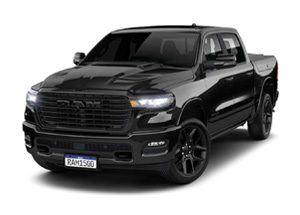HOW TO CHECK YOUR TRAILER'S WEIGHT RATING
WHAT IS TONGUE WEIGHT?
RECOMMENDED WEIGHT DISTRIBUTION FIGURES
Tandem Axle Trailer
9%-15%
Single Axle Trailer
10%-15%
Fifth-Wheel Trailer
18%-20%
HOW TO BALANCE TONGUE WEIGHT
CÓMO CONECTAR EL TRÁILER
Ya sea que estés conectando un receptor de enganche, un enganche de quinta rueda o cuello de cisne, estos tres videos te ayudarán a preparar tu remolque en pocos pasos.
Cómo manejar con un tráiler
Si es la primera vez que remolcas un tráiler, asegúrate de practicar en un lugar abierto antes de salir de viaje. Esta es la información básica.
IR DESPACIO
Cuando remolcas un tráiler cargado, tienes que acelerar y frenar con más distancia. Entonces hazlo despacio dejando lugar entre tu camioneta y otros vehículos. Conduce como lo harías en un camino con hielo.
MANTENER EL CONTROL
Si sientes que el remolque comienza a oscilar o serpentear, simplemente quita el pie del pedal del acelerador. No frenes ni aceleres.
MÁS LARGO ES EL TRÁILER, MÁS AMPLIO EL GIRO
Balancéate mientras giras y mira los espejos dos veces para asegurar de que el tráiler pase todos los obstáculos.
ADELANTARSE
Como regla, adelántate solo cuando sea necesario y acata todas las normas. Recuerda considerar la longitud del tráiler cuando pasas un vehículo más lento. Verifica haber dejado atrás al otro vehículo antes de retomar tu carril. Además, el peso adicional del tráiler hará que la aceleración sea más lenta. Asegúrate de usar señales de giro y dejar espacio libre suficiente.
TERRENO DESPAREJO
Siempre disminuye la velocidad antes de ir cuesta arriba. Si tu vehículo tiene transmisión manual, baja un cambio al subir y descender pendientes.
LLEVAR NEUMÁTICO DE REPUESTO GRANDE
Nunca uses un neumático de repuesto compacto cuando remolcas un tráiler.
CÓMO RETROCEDER
Primero, coloca tu mano en la parte inferior del volante. Para girar a la izquierda, mueve tu mano a la izquierda. Para girar a la derecha, muévela a la derecha. Ajusta la dirección de a poco. Leves giros del volante permiten mayor movimiento del tráiler. Si el remolque colea, simplemente avanza para enderezarlo e intenta de nuevo. Puede tomar tiempo acostumbrarse a retroceder, por lo tanto, hazlo despacio y pide a alguien que se ubique detrás del tráiler y te diriga.
CÓMO ESTACIONAR
Siempre estaciona en una superficie plana y nivelada. Busca un lugar para estacionar donde puedas ir hacia adelante para evitar retroceder en un estacionamiento. Siempre pon el freno de mano y coloca calzas en las ruedas del tráler.
CONSEJO: MANTENTE ALERTA
Acelerar, frenar y cambiar de carril lleva más tiempo cuando remolcas un tráiler. Mira más lejos en la carretera para asegurarte de evitar cualquier problema posible.




